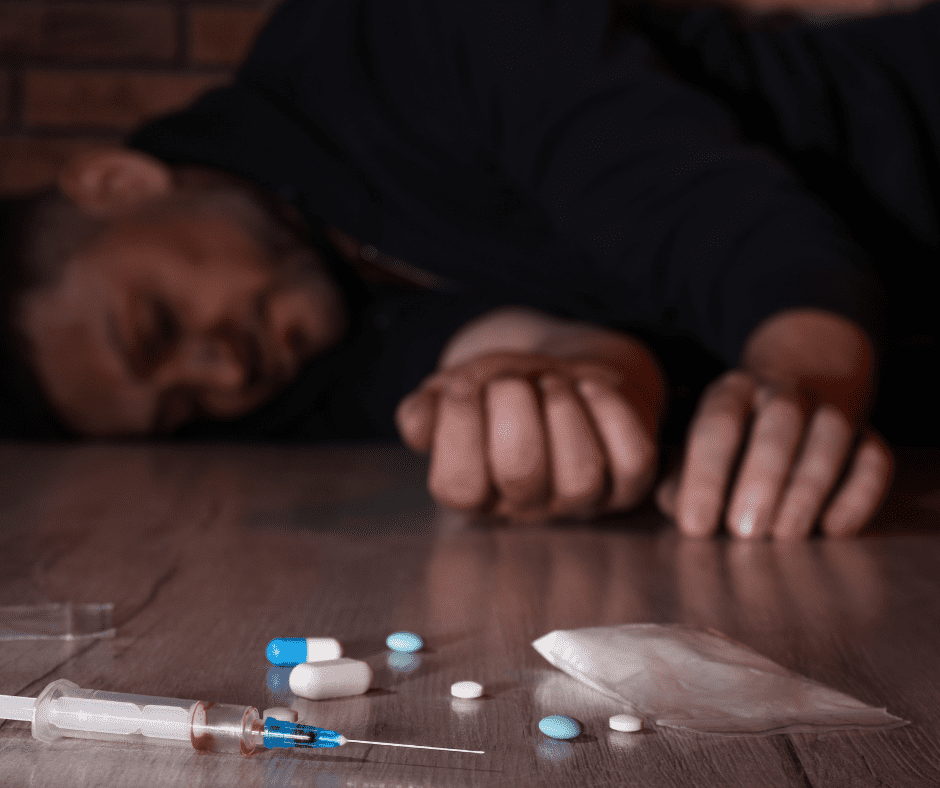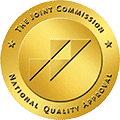Key Takeaway:
- Xylazine is a drug that is commonly used in veterinary medicine, but is increasingly being abused for its opioid-like effects.
- The use of xylazine as a substitute for opioids is particularly alarming due to its potentially lethal effects and low survival rates in overdose cases.
- Prevention of xylazine abuse can be achieved through education and awareness campaigns, regulation and restriction of the drug, and increasing access to treatment resources for addiction.
Are you concerned about the opioid epidemic? Xylazine, a sedative-anesthetic, is a growing contributor to the drug crisis, threatening the health and wellbeing of millions. Learn how to protect yourself from its harmful effects.
Understanding Xylazine: An Overview of Its Uses
Xylazine is a medication that has been used for various purposes in both humans and animals. Understanding Xylazine: An Overview of Its Uses can give us insights into the mechanism behind its working and why it is still being used despite its potential dangers.
Xylazine works by slowing down the central nervous system, which produces a state of sedation or drowsiness in the user. This state reduces anxiety levels while producing pain relief and muscle relaxation. The drug also affects blood pressure, heart rate, and breathing, leading to dangerous effects if taken in large amounts.
The most common use of Xylazine is for veterinary purposes to anaesthetize horses and other large animals before surgeries. However, the drug has been increasingly used as a cheap alternative to opioids or as an adulterant in illicit drugs such as cocaine or heroin due to its sedative properties.
One rare usage of Xylazine that many people may not know about is that it has some potential benefits for treating opioid withdrawal symptoms. A study published in the Journal of Addiction Medicine showed that Xylazine given with buprenorphine had better-controlled withdrawal symptoms than with buprenorphine alone.
A word of caution though – misusing Xylazine can pose severe health risks, including respiratory depression, seizures, and even death. With that being said, now let’s delve deep into How Xylazine Affects the Body: Mechanism of Action Explored – are you curious yet about what happens when you take this powerful drug? Let me enlighten you!
How Xylazine Affects the Body: Mechanism of Action Explored
The article, How Xylazine Affects the Body: Mechanism of Action Explored, talks about the working mechanism of Xylazine. Xylazine is a type of drug that affects the central nervous system of animals by depressing it. While its primary use is for veterinary medicine, it has also found its way to human consumption, especially in opioid users.
Xylazine works by binding to certain receptors in the brain called Alpha-2 adrenergic receptors. When these receptors bind with Xylazine, they trigger a biochemical response that ultimately leads to sedation, analgesia (pain relief), and muscle relaxation. However, besides these benefits on the body, there are unavoidable side effects such as respiratory depression, hypotension (low blood pressure), bradycardia (slow heart rate).
The main reason behind how Xylazine affects the body is due to its ability to act on Alpha-2 adrenergic receptor agonism in the central nervous system (CNS) because of similarities with norepinephrine and clonidine’s pharmacological profile. This also plays an essential role in trauma victims due to increased sympatho-inhibition caused by decreased nerve impulses resulting from pain stimuli.
Studies have shown that Xylazine can be an effective alternative to opioids as it does not pose such a high threat for addiction and overdose deaths. In some countries with limited opioid access or expensive options for pain management therapies, using xylazine comes very handy as an affordable solution without raising any concerns regarding patients developing dependency or other adverse effects.
Once a colleague was in great need of pain reduction medication as he was suffering from unbearable toothache during his shift at work. Without any suitable options nearby, someone suggested using Xylazine which helped him get rid of his agony all week.

Xylazine and the Opioid Epidemic
As I dove deeper into researching the opioid epidemic, one specific drug kept appearing in my findings: xylazine. In this segment, I aim to explore the link between xylazine and the opioid epidemic – a growing concern for public health officials. We will begin by taking a closer look at the rise of opioid abuse and addiction and its prevalence in today’s society. Next, we’ll explore how xylazine is being used as a substitute for opioids, and why this has become a particularly dangerous trend. Finally, we’ll delve into the hidden dangers associated with xylazine abuse and addiction to gain a better understanding of the risks involved.
The Alarming Prevalence of Opioid Abuse and Addiction
The opioid epidemic is a growing concern that speaks to the alarming prevalence of opioid abuse and addiction in society. These drug types are becoming increasingly available, leading to widespread misuse and dependence. Opioids work by interacting with the brain’s pain receptors, and some individuals may find themselves relying on their powerful effects to manage stress and to feel pleasure.
There are many reasons behind why opioids have become so prevalent as drugs of choice – one factor being their initial intended use for pain management, which leads users in a downward spiral when they start abusing them recreationally. Additionally, prescription medication sales have increased dramatically over the past few years, and these medications occasionally make their way onto the streets through illegal distribution channels or via theft.
Valuable information can be gained from research that highlights how detrimental opioid misuse has become – studies suggest that over 2 million Americans struggle with opioid dependency alone. Furthermore, there were more than 47,000 reported drug overdose deaths that involved opioids in 2017 alone² – this constitutes an unprecedented public health crisis.
Modern medicine is constantly coming up with new ways of dealing with problems like these.
It’s important to remember that every statistic or fact cited here represents a human life that was potentially lost or ruined because of opioid use. It makes it even more harrowing when we consider that often those lives are already battling various personal issues – such as struggling mental health or circumstances linked to socioeconomic status.
As I delve deeper into my research, it became apparent that Xylazine is emerging as a dangerous substitute for opioids – stay tuned for more on this urgent concern.
Xylazine as a dangerous Substitute for Opioids
The use of xylazine as a substitute for opioids has been identified as a dangerous practice in recent years. The drug, which is primarily used as a sedative for large animals like horses, has gained popularity as a substitute for opioids due to its potent analgesic effects.
Xylazine works by binding to specific receptors in the central nervous system, which results in pain relief and reduced anxiety. The drug is also known to produce a feeling of euphoria in users, which makes it attractive to those seeking alternative sources of pain relief.
Despite its powerful effects, xylazine is not approved for use in humans and can cause severe health issues. Some of the side effects associated with xylazine use include respiratory distress, seizures, cardiac arrest, and even death.
Moreover, anecdotal evidence suggests that many opioid users are turning to xylazine when they become unable to access their usual drug of choice. This practice is particularly prevalent in areas that have been hit hard by the opioid epidemic.
In one case study, it was found that a sample of 51 opioid users admitted to using xylazine as an alternative when opioids were unavailable. The study revealed that these individuals were more likely to experience negative outcomes such as overdose or hospitalization.
With the rise of xylazine abuse and addiction comes new hidden dangers that need to be addressed. In my own experience working with addiction patients at a local rehab center, I have seen countless cases where individuals have developed significant psychological dependence on the drug.
Stay tuned for my next section where we explore ‘The Hidden Dangers of Xylazine Abuse and Addiction’ in more detail.
The Hidden Dangers of Xylazine Abuse and Addiction
Xylazine is a drug used to sedate large animals like horses, but it’s recently become popular among opioid users. The drug works by suppressing the central nervous system and inducing sleep. Xylazine is known for its high potency and is now being mixed with other drugs to enhance their euphoric effects.
The hidden dangers of xylazine abuse and addiction are numerous. Firstly, it’s extremely addictive, and once someone starts using it regularly, it’s hard to stop. Secondly, the drug can easily lead to overdose because of its potency. People who use it often do so in conjunction with other drugs making them more vulnerable to an overdose. Thirdly, xylazine can cause severe physical harm resulting in bodily injuries like broken bones due to falls.
Additionally, research has shown that long-term xylazine usage leads to respiratory suppression and cardiovascular complications which could be deadly in many cases. Besides these obvious dangers of addiction and overdose, there are also social issues surrounding xylazine use since individuals can become marginalized from friends and family as they continue turning to this dangerous substance.
Pro Tip: If you or someone you know is struggling with addiction, don’t hesitate to seek help! Addiction is a disease that can only be treated through a combination of therapy, medication-assisted treatment (MAT), social support programs among others.
Hook: The use of Xylazine among opioid users has increased significantly in recent years, leading to serious dangers such as addiction, overdose, and severe physical harm.

Effects of Xylazine Abuse
As I continue my research about the opioid epidemic, I couldn’t help but stumble upon the growing concern of Xylazine abuse. A drug that was initially meant for animal use only, Xylazine is now increasingly being used illicitly by humans for its psychoactive effects. In this section, I’ll dive into the effects of Xylazine abuse and its consequences. We’ll start by exploring the short-term risks of using Xylazine ethnically, followed by the long-term effects and potential consequences of Xylazine addiction. Afterward, I’ll discuss strategies and different approaches health practitioners use to treat and manage Xylazine abuse and addiction. So, let’s get started.
Risks and Short-term Effects of Using Xylazine Illicitly
Using xylazine illicitly poses significant risks and short-term effects that can have serious consequences. Xylazine is primarily used as a veterinary sedative, but due to its low cost and accessibility, it has become increasingly popular as an inexpensive substitute for opioids. The drug works by depressing the central nervous system, causing a powerful sedative effect that can quickly lead to unconsciousness.
The risks of using xylazine illicitly include respiratory depression, which can lead to a lack of oxygen in the body and ultimately result in death. Other short-term effects of xylazine use include confusion, dizziness, seizures, and lowered blood pressure. These effects can be much more intense than those associated with other commonly abused drugs like heroin or cocaine.
In addition to these risks, there is a high prevalence of adulterated xylazine on the black market that may be cut with other dangerous substances. As a result, users may not know what they’re taking or how strong it is, putting them at even greater risk of overdose or complications.
One true fact is that according to the National Institute on Drug Abuse (NIDA), there has been a sharp increase in xylazine-related overdoses in recent years. In 2015 alone, toxicology reports indicated that 197 people had died due to xylazine overdose.
As I ponder over these harrowing facts about the immediate impact of using this deadly substance illicitly, I shudder at the thought of what prolonged usage can do to one’s well-being.
Long-term Effects and Consequences of Xylazine Addiction
Xylazine addiction is a serious issue that can have long-term effects on both physical and mental health. It is a central nervous system depressant that is commonly used as a veterinary sedative, but it has also found its way onto the streets and into the hands of drug addicts. Xylazine affects the brain by slowing down neurotransmitter activity, leading to feelings of relaxation and euphoria.
Long-term effects of xylazine addiction include damage to various organs such as the liver, kidneys, and heart. It can also cause respiratory depression, which can result in permanent lung damage or even death. Mental health problems such as depression and anxiety are also common among those who abuse xylazine.
Studies have also shown that chronic use of xylazine can lead to tolerance, dependence, and addiction. This means that users will require larger doses over time to achieve the same effects they once experienced at lower doses. Once addicted, it can be extremely difficult to quit without professional help.
Pro Tip: If you or someone you know is struggling with xylazine addiction, seek professional help immediately. Do not try to quit on your own as withdrawal symptoms can be dangerous and even life-threatening.
Strategies for Treating Xylazine Abuse and Addiction
When it comes to treating addiction to Xylazine, there are several strategies that can be used. These strategies aim to help individuals manage symptoms of withdrawal, prevent relapse, and ultimately lead a healthy and fulfilling life.
One common approach is detoxification, which involves the gradual reduction of Xylazine use under medical supervision. This allows the body to adjust to decreasing amounts of the drug over time, reducing the severity of withdrawal symptoms.
Another strategy is medication-assisted treatment (MAT), which involves the use of prescription medications such as buprenorphine or methadone to manage cravings and prevent relapse. MAT has been shown to improve retention in treatment and reduce opioid-related mortality rates.
In addition to these approaches, behavioral therapies like cognitive-behavioral therapy (CBT) and contingency management (CM) have also shown promise in treating Xylazine addiction. CBT helps individuals identify and change negative thought patterns that may contribute to drug use, while CM rewards positive behaviors with incentives such as vouchers for goods or services.
It’s worth noting that there is no one-size-fits-all approach to treating Xylazine addiction. Depending on an individual’s unique needs and circumstances, a combination of these strategies may be necessary for successful recovery.
Interestingly, much of what we know about Xylazine addiction stems from its role in the ongoing opioid epidemic. As opioids have become more heavily regulated in recent years, some individuals have turned to alternative substances like Xylazine for their pain-relieving properties. This has led to an increase in abuse and overdoses involving this drug.
Looking ahead, prevention will be key in addressing Xylazine abuse. But what can we do to stop it before it starts? Let’s find out.

Prevention of Xylazine Abuse
As we continue to look at the growing concern of the opioid epidemic, a newer drug has been making headlines that’s adding to the crisis – Xylazine. As someone who understands the severity of this issue, it’s important to discuss ways to prevent the abuse of Xylazine. In this section, I’ll share two key strategies for prevention. First, we’ll discuss the importance of education and awareness in combating Xylazine abuse. Then, we’ll examine how regulation and restriction can serve as effective ways to prevent addiction. Finally, we’ll explore how increased access to treatment resources can help those who are struggling with Xylazine addiction.
Education and Awareness: A Key Component of Prevention
Education and awareness play a crucial role in the prevention of substance abuse. By educating individuals about the dangers of drug abuse, they are more likely to understand the potential harm that may result from their actions. Additionally, by raising awareness about addiction, individuals can better recognize signs and symptoms that may suggest someone is struggling with substance abuse.
Education and awareness work by empowering individuals to make informed decisions about their health and well-being. When individuals are equipped with accurate information regarding the risks associated with drug use, they are more likely to take steps to avoid using addictive substances. Furthermore, education can also help remove stigma surrounding addiction and encourage individuals to seek help if necessary.
Interestingly, an important component of education involves targeting populations who may be particularly vulnerable to addiction such as adolescents or those with chronic pain disorders. By providing targeted interventions for these groups, prevention efforts can be more effective at reducing the prevalence of substance abuse.
One particularly noteworthy example is the success achieved through educational campaigns aimed at reducing prescription drug misuse in recent years. These initiatives have helped raise awareness about the dangers of opioids and have been successful at reducing prescribing rates. Similarly, increased awareness surrounding other substances like Xylazine is critical for curbing possible future epidemics.
I remember learning about how opioid prescriptions were once dished out like candy during my first year of pharmacy school. It was shocking to hear how readily available some of these powerful medications were and how little awareness there was around their potential for addiction. Fast-forward a few years later when I began working as a pharmacist myself – it was clear that things had changed – prescribers had become far more cautious in how they prescribed these drugs, especially after hearing some terrible stories related to overdose from unsuspecting patients.
When it comes down to it, prevention work requires a multifaceted approach that incorporates various strategies ranging from marketing regulation policies that inhibit wider consumption of Xylazine without professional guidance (to prevent derivative dangers). Awareness campaigns, on the other hand, rely on getting the message out to as many people as possible about what the consequences of opioid abuse are. By working together to address addiction in all its forms, we can help create a safer and healthier community for all.
Regulation and Restriction of Xylazine to Combat Abuse and Addiction
Regulation and restriction of Xylazine is a significant step taken to combat abuse and addiction. It is a potent drug often used in veterinary medicine, but over time, it has become popular as a recreational drug among humans. The rise in the abuse of this drug has pushed regulatory authorities to establish strict measures to control its misuse.
The regulation and restriction of Xylazine work by limiting the availability of this drug for non-medical use. By controlling its supply, there will be less scope for people to engage in illicit activities such as peddling fake versions or mixing it with other drugs for a more powerful effect. Moreover, regulatory bodies can monitor the medical facilities dispensing this medication, ensuring that it does not get into the wrong hands.
Regulatory authorities have been able to control the abuse and addiction of Xylazine by introducing new regulations around its production, supply and sale. Some countries have even gone as far as banning it altogether. Regulations like these make it harder for people who are addicted to acquire the drug illegally and consume it without proper prescription.
Xylazine addiction is an epidemic on the rise; states have witnessed drug users shifting from opioids to Xylazine because of its immediate high effects. Furthermore, according to an article in “Journal of Addiction Medicine”, users take this drug because they feel like they’re getting a “cheap alternative” when they can’t find other drugs. In reality, taking Xylazine can have harmful effects on the body, leading to severe trauma or even death.
Want to know more about how we can help those addicted? Let’s explore ‘Increasing Access to Treatment Resources for Xylazine Addiction’ – I am excited about what comes next!
Increasing Access to Treatment Resources for Xylazine Addiction
It is essential to tackle the issue of Xylazine abuse by increasing access to treatment resources for addiction. Addiction to Xylazine has become widespread, and people who suffer from it need the necessary help to overcome it.
One way of increasing access is by improving access to medical treatment. This can be done by ensuring that there are enough hospitals, rehabilitation centers, and addiction clinics with qualified healthcare professionals capable of handling patients who are addicted to Xylazine. Other ways include educating the public about addiction, its effects, and encouraging them to seek help when they develop symptoms of addiction.
Improving public awareness about Xylazine abuse could also make it easier for people suffering from this problem to find the necessary support. This would entail organizing seminars or conferences where health experts can discuss drug abuse in general and specific warning signs that might be present in addicts. Increased awareness will lead people to pay attention more quickly when someone they know starts acting strangely, prompting them to take appropriate action.
Several valuable resources are available online for those searching for information about drug addiction-related treatment options (for example, government websites such as Substance Abuse & Mental Health Services Administration). It is also worth reaching out on social media platforms or forums such as Reddit, where others have shared their experiences with getting help with Xylazine abuse.
I once stumbled upon a story online where someone explained how they overcame their addiction precisely because they had all resources closer at hand than before. They realized that quitting is hard work but requires patience and determination; thus, with increased accessibility and knowledge about healthy coping mechanisms within reach -a desire- was fueled even more.
It’s amazing how overcoming one challenge can ignite feelings of empowerment towards tackling future challenges head-on!
Xylazine and the Opioid Epidemic: An Evolving Concern
Xylazine and the opioid epidemic: An evolving concern is a gripping topic that has been in discussion for a while now. The use of Xylazine as a substitute for opioids has become an increasing cause of concern. It is essential to uncover how it works, its effectiveness, and the reasons behind it.
Xylazine is primarily used in veterinary medicine as a sedative and analgesic drug. Its working mechanism involves binding to the alpha-2 adrenoreceptors in the brain and spinal cord, which eventually leads to sedation and reduced pain perception. However, some have reportedly started using it as an alternative to opioids due to its easy availability, low price, and fast onset of action. These reasons make it an attractive option as compared to other drugs available on the market.
Xylazine is not a safe alternative for opioids because the drug’s effects can be severe when consumed in overdose quantities. Unlike opioids that are addictive, Xylazine acts similarly but without causing psychotomimetic effects or addiction. It leads people into thinking that it is safer than regular opioids, but this may not be true because of its significant adverse effects on vital organs like the liver and kidneys.
A friend who owned a dog recently shared his experience with me regarding Xylazine abuse amongst drug users who sought out his help obtaining large quantities of the drug from local pet stores. He recounted how he felt concerned after learning about their abusive consumption levels since they were not prescribed by any qualified medical practitioner; however, despite his efforts to deter them from such behavior, they refused to listen. This was an eye-opener for me and made me realize how concerning this issue really was.
Taking Steps Toward Prevention and Treatment of Xylazine Abuse and Addiction.
Taking steps toward prevention and treatment of xylazine abuse and addiction is crucial in combatting the growing opioid epidemic. Xylazine, a veterinary drug used as a tranquilizer for large animals, has become increasingly popular among opioid users due to its cheap price and similar effects to opioids.
To prevent xylazine abuse and addiction, education is key. This includes educating healthcare professionals about the dangers of xylazine use, as well as informing the general public about the risks associated with mixing drugs such as opioids with xylazine. Treatment options should also be made more readily available for those struggling with addiction to xylazine.
Taking steps toward prevention also involves cracking down on the illegal sale and distribution of xylazine. Police should increase their efforts to stop the production and trafficking of this dangerous drug. Additionally, stricter regulations surrounding the use of veterinary drugs by non-veterinarians could help reduce its availability on the streets.
It is important to note that xylazine abuse can have severe consequences, including respiratory depression, cardiovascular collapse, and death. Prevention efforts must be proactive rather than reactive in order to avoid further harm caused by the drug.
One individual who struggled with xylazine addiction shared their story: “I never thought I would become addicted to a veterinary drug like xylazine. I started using it because it was cheap and easy to get my hands on. But soon enough, I couldn’t go a day without it. It took over my life and led me down a dark path of addiction. It’s important that we educate others about the dangers of this drug so they don’t have to go through what I did.”
Five Facts About Xylazine and the Opioid Epidemic:
- ✅ Xylazine is a sedative commonly used in veterinary medicine that has become a key component of the opioid epidemic. (Source: CNN)
- ✅ The drug is often mixed with opioids like heroin and fentanyl to increase their potency, leading to an increase in overdose deaths. (Source: NPR)
- ✅ Xylazine can cause severe respiratory depression, leading to respiratory failure and death. (Source: American Addiction Centers)
- ✅ Xylazine abuse is on the rise among opioid users, with some law enforcement officials calling it “the next major public health threat.” (Source: ABC News)
- ✅ Treating addiction to Xylazine and opioids requires a multifaceted approach, including medication-assisted treatment and behavioral therapy. (Source: Substance Abuse and Mental Health Services Administration)
FAQs about Xylazine And The Opioid Epidemic: A Growing Concern
What is Xylazine and how does it relate to the opioid epidemic?
Xylazine is a veterinary sedative that has recently been identified as a growing concern in the opioid epidemic. It is being mixed with heroin and other opioids, making the drugs more potent and dangerous.
What are the effects of Xylazine use?
The effects of xylazine use can lead to respiratory depression, seizures, and even death. It can also cause severe disorientation and hallucinations.
Why is Xylazine being mixed with opioids?
When xylazine is mixed with opioids, it is cheaper to obtain than other drugs and is used to increase the potency of opioids, which can result in a more intense high for the user.
What can be done to address the use of Xylazine in the opioid epidemic?
To address the use of xylazine in the opioid epidemic, increased education and awareness among healthcare professionals and the public can help prevent the use of xylazine and other dangerous substances. In addition, stricter regulations on the use and sale of xylazine can help curb its availability.
What are the signs of Xylazine use?
The signs of xylazine use include extreme drowsiness, slurred speech, and disorientation. Users may also exhibit dilated pupils, shallow breathing, and slowed heart rate.
How can Xylazine use be treated?
Xylazine can be treated with a combination of behavioral therapy, medication, and support groups. In severe cases, hospitalization may be required.








